Baffled by orthodontics and curious about what Invisalign can offer?
In this blog post, we unravel orthodontics’ intricacies and Invisalign’s groundbreaking role in this field. You’ll gain an understanding of how this nearly invisible method works and the critical factors in deciding whether it’s the right choice for you.
Let’s navigate the realm of orthodontics together and unveil the potential of Invisalign.
Introduction: what is orthodontics?
Orthodontics, a specialized branch of dentistry, has been around for centuries, paving the way for beautiful smiles. But what exactly is it? It focuses on diagnosing, preventing, and treating dental and facial irregularities, primarily involving the alignment and positioning of the teeth and jaws. Orthodontic treatment aims to correct malocclusions, which are improper bites or misalignments of the teeth and jaws.
History of orthodontics
The practice of orthodontics can be traced back to ancient times when Egyptians used a primitive version of braces. Fast forward to the present day, and we have many advanced orthodontic treatments.
Modern orthodontics: techniques and innovations
Modern orthodontics has made teeth alignment easier, faster, and more comfortable, from traditional braces to the latest invisible aligners.
What is Invisalign?
Invisalign is a revolutionary approach to orthodontics. It uses clear, plastic aligners to shift your teeth into the desired position gradually.
How does Invisalign work?
Invisalign works in stages, with each aligner set worn for about two weeks before moving to the next set. The exact duration depends on the individual’s dental needs.
Why is Invisalign considered an orthodontic treatment?
Like traditional braces, Invisalign aims to rectify dental issues such as overbite, underbite, crossbite, and teeth crowding—solidifying its place in orthodontic treatments.
Invisalign vs. traditional braces
So, how does Invisalign stack up against traditional braces?
Both have pros and cons, but Invisalign offers significant advantages like aesthetics and comfort.
Benefits of Invisalign
- Visual appeal: Unlike metal braces, Invisalign aligners are nearly invisible, letting you flash that smile without hesitation.
- Comfort and convenience: Invisalign aligners are removable, meaning you can eat, brush, and floss normally. Plus, there are no uncomfortable wires or brackets.
- Health advantages: Because you can maintain regular oral hygiene, Invisalign often leads to healthier gums and fewer cavities than traditional braces.
Choosing the proper orthodontic treatment
Consulting with an orthodontist
Consulting with a qualified orthodontist is crucial to decide the best treatment plan for you, whether Invisalign, braces, or something else.
Determining the best treatment
Remember, the best treatment suits your lifestyle, dental needs, and personal preferences. Invisalign is an excellent option for many, but it’s not one-size-fits-all.
FAQs
Is Invisalign faster than traditional braces?
It depends on the individual’s dental needs. Sometimes, Invisalign can be faster, but it’s not guaranteed.
Can anyone use Invisalign?
While Invisalign is an excellent solution for many, it may not be suitable for severe orthodontic cases. Always consult with an orthodontist.
Is Invisalign painful?
Invisalign is generally less painful than traditional braces. However, some discomfort is normal, especially when switching to a new aligner set.
How often do I need to wear my Invisalign aligners?
For the best results, aligners should be worn 20 to 22 hours daily, removing them only for eating, brushing, and flossing.
Does insurance cover Invisalign?
Some dental insurance plans cover Invisalign, but it’s best to check with your provider for specifics.
Conclusion
So, to answer the question: Invisalign is considered a form of orthodontics. It’s an innovative, effective, and aesthetically pleasing solution for correcting dental misalignments.
However, the decision should always be made in consultation with a trusted orthodontist to ensure it meets your needs.
Havens Orthodontics is located in Michigan, and we happily welcome folks at any of our eight locations in the suburbs of Detroit, including Clarkston, St. Clair Shores, Washington, Romeo, Imlay City, Clawson, Farmington, and Canton, MI.

